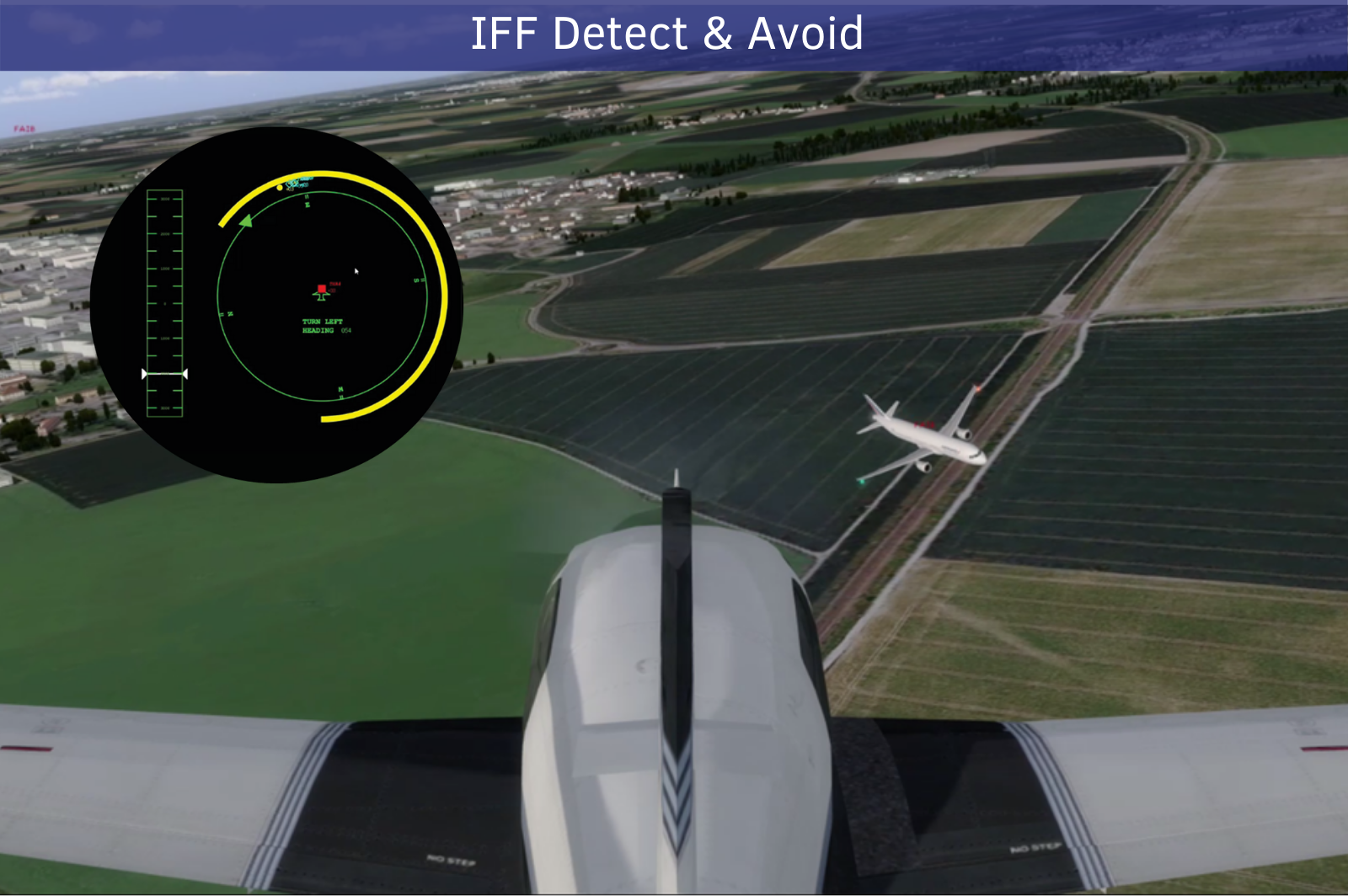Collision avoidance: when drones can fly with the other traffic

November 2024 at an airbase in France
Karen is a bit anxious. Comfortably installed in her pilot's seat, she takes her unmanned combat air vehicle (UCAV) down the runway and up into the morning sky. She’s flown many times before. But missions usually take place in segregated airspace — a corridor free of any other traffic, which is reserved, declared and authorised several days in advance. But today, for the first time, she’s flying to a training area through the same airspace as civilian traffic.
A new dial appears on her screen: it’s a Airborne Collision Avoidance System, (ACAS Xu), which wasn’t there before. Every aircraft in the system's range is displayed as a symbol: blue diamonds, yellow circles, and red squares for the ones in closest proximity. If the system spots the risk of a mid-air collision, it immediately calculates an avoidance manoeuvre.
This small display built into Karen’s flight management system is the result of over 10 years of R&D and efforts to update the relevant standards, algorithms and equipment to ready the skies for a massive influx of drones.
Flashback to 2020
TCAS collision avoidance system dedicated for airliners
For many years, commercial airliners have flown either in controlled airspace, where ATC services are provided, or in uncontrolled space, and they all carry a TCAS system. If two aircraft are on converging headings, these devices enable them to:
- identify and alert each other via an interrogator / transponder system
- receive confirmation from the other aircraft
- calculate advisories so the two aircraft perform complementary avoidance manoeuvres (if one descends, for example, the other needs to climb).
But for the first generations of UCAVs operated by the armed forces, this kind of system was impractical. A typical TCAS unit is heavy — around 10 kg — and the vertical manoeuvres it recommends simply can’t be executed by drones, which are slower and much more agile horizontally than vertically. And even though the larger drones used a transponder with an encrypted military mode and Identification Friend or Foe (IFF) capability, it didn't allow them to fly in airspace with heavy traffic. After all, UCAV pilots don’t have a direct visual on the environment surrounding their aircraft...
ACAS X: developing a universal collision avoidance system for all aircraft
To overcome the problem, the first challenge was to review the relevant standards. Here, the Massachusetts Institute of Technology (MIT), which helped develop the original TCAS system, had been working for several years on a new standard called ACAS X, based on a more advanced algorithm. Still fully compatible and interoperable with the previous TCAS, this new system is designed to:
- specify avoidance manoeuvres for each aircraft type (airliner, UAV, helicopter, etc.).
- utilise information from the dialogue between cooperative interrogator / transponder systems, but also from non-cooperative onboard sensors such as radars, cameras and GPS receivers. This new functionality considerably reduces the number of false alarms or advisories that are issued but are unworkable when flying at low altitude, for example.
Working closely with MIT, experts from Thales took the new algorithm, launched an industrial development and simulated its performance using more than a million potential collision scenarios provided by Eurocontrol, the European organisation for the safety of air navigation.
The second challenge was to embed the new collision avoidance functionality on board the UAV platform without significantly adding to its weight. Should it be integrated into an existing piece of onboard equipment, or manufactured as a new unit, which would need to be exceptionally small and light? As it happened, Thales already offered the TSC 4000, an IFF transponder weighting just 2 kg, which had already been selected for a number of UCAVs programmes and been fully proven in the air. At the time, the product allowed drones to be identified , but it couldn’t interrogate the transponders on board airliners. So Thales engineers pulled off an impressive feat: with a simple software upgrade and an additional small circuit board, they gave the TSC 4000 all the functionality of an ACAS interrogator and the ability to run the ACAS Xu algorithm — the ACAS X variant for drones. Working with a whole array of industry partners, the teams just needed to test the concept in actual flight conditions and ensure interoperability with the various radars and optronic systems that equip most UCAVs.
Back to 2024: mission accomplished for Karen
From her home airbase, Karen starts her approach to the runway at the training area over 100 km away. As the drone gradually drops its altitude, the latest-generation ACAS system constantly scans the surrounding area, helping Karen complete the descent manoeuvre in complete safety. “It’s just as well I have this,” she says, realising there are up to 40 other aircraft in the airspace covered by her instruments.
Suddenly one of the aircraft symbols turns red. And thanks to ACAS Xu , the last-minute avoidance manoeuvre is immediately — and automatically — executed, and the plane is finally on the tarmac. And while it’s being towed to the hangar, Karen relaxes with a well-deserved coffee and starts to muse: “If only every helicopter, drone, commercial and military aircraft were equipped with the same kind of system!”


